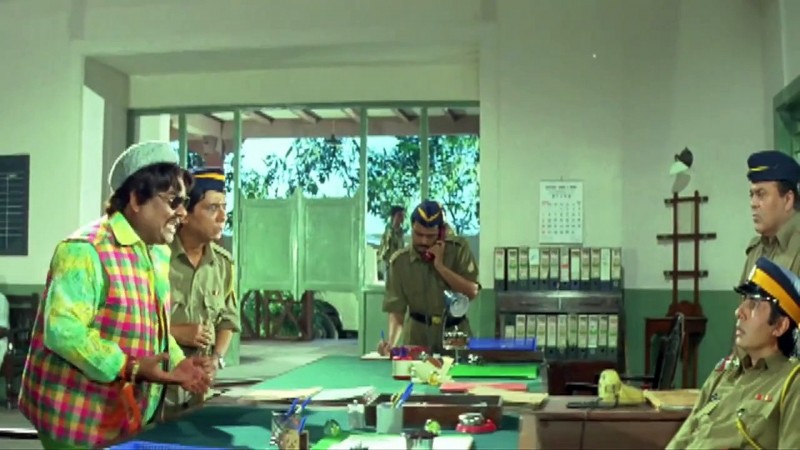
The act of copying another person's work without giving them due credit or permission is known as plagiarism, and it has long been a contentious issue in the creative community. The scene in the Bollywood film "Bade Miyan Chhote Miyan" where the characters Bade and Chhote Miyan impersonate police officers to free Sharafat Ali is one such instance of plagiarism that sparked a lot of discussion. This scene was discovered to be an exact replication of a scene from the Pakistani play "Humsa Ho To Samne Aye," which was written and starred the renowned comedian Umer Shariff. We will go into great detail about this contentious scene, its history, and the repercussions it had on both the Bollywood and Pakistani entertainment industries in this article.
A crucial scene takes place in a police station in the 1998 Bollywood comedy "Bade Miyan Chhote Miyan," starring Amitabh Bachchan and Govinda. Amitabh Bachchan and Govinda's characters Bade and Chhote Miyan pose as police officers to free Sharafat Ali, a persona who has been falsely accused of committing a crime. There is a lot of humor, slapstick comedy, and clever one-liners in this scene. It made an immediate impression on the audience and helped the movie become a success overall.
Umer Shariff, a legendary comic in Pakistan, wrote and performed the well-known play "Humsa Ho To Samne Aye." The play's clever dialogue and humorous situations center on its 1990s debut. Shariff pretends to be a policeman in one particular scene to exonerate a character who has been wrongfully accused of a crime. There have been accusations of plagiarism because of how strikingly similar this section is to the scene in "Bade Miyan Chhote Miyan."
The two works' similarities in terms of plagiarism are quite convincing. There are striking similarities between the conversations, actions, and even the police station's setting. This similarity extends to particular lines said by the characters and the timing of the humor. Even more difficult to deny the accusations of plagiarism are the similarities in both scenes, which center on a false accusation, police officer impersonation, and the subsequent release of an innocent person.
Reputational harm was done to Bollywood as a result of the obvious ripoff of a scene from a Pakistani play. Bollywood has frequently come under fire for appropriating ideas from other cultures without giving due credit. The perception that Bollywood lacks originality was strengthened by this incident, which added fuel to the fire.
Plagiarism is not only an ethical issue; it is also one that has legal repercussions. Umer Shariff might have taken legal action for copyright infringement against "Bade Miyan Chhote Miyan"'s creators. It appears, though, that no such action was taken and that the controversy was largely resolved in the court of public opinion.
Cultural Sensitivity: The incident also made people wonder whether the entertainment industry is sensitive to different cultures. Although appropriating practices from other cultures are not inherently wrong, they should be done with respect and attribution. In this instance, tension developed between the Indian and Pakistani entertainment industries as a result of Umer Shariff's work receiving little recognition.
Impact on Future Works: Both Bollywood and the Pakistani entertainment sector learned a valuable lesson from the incident. It emphasized the significance of giving credit where credit is due and averting overt plagiarism. Later playwrights and filmmakers were more aware of the potential plagiarism issues and sought to produce original content.
A striking instance of plagiarism in the world of film is the scene in "Bade Miyan Chhote Miyan" where Bade and Chhote Miyan pose as police officers to free Sharafat Ali. It is impossible to ignore how much it resembles a scene from the Pakistani play "Humsa Ho To Samne Aye" by Umer Shariff. Both Bollywood and the Pakistani entertainment industry were significantly impacted by this incident in terms of their reputations, legal considerations, cultural sensitivity, and the production of future works. In the field of creative arts, it serves as a reminder of the value of originality and giving credit where credit is due.
From 1994 Production Hiccups to 1996 Box Office Glory
Celebrating the 52nd Birthday of Sukhwinder Singh: A Musical Journey